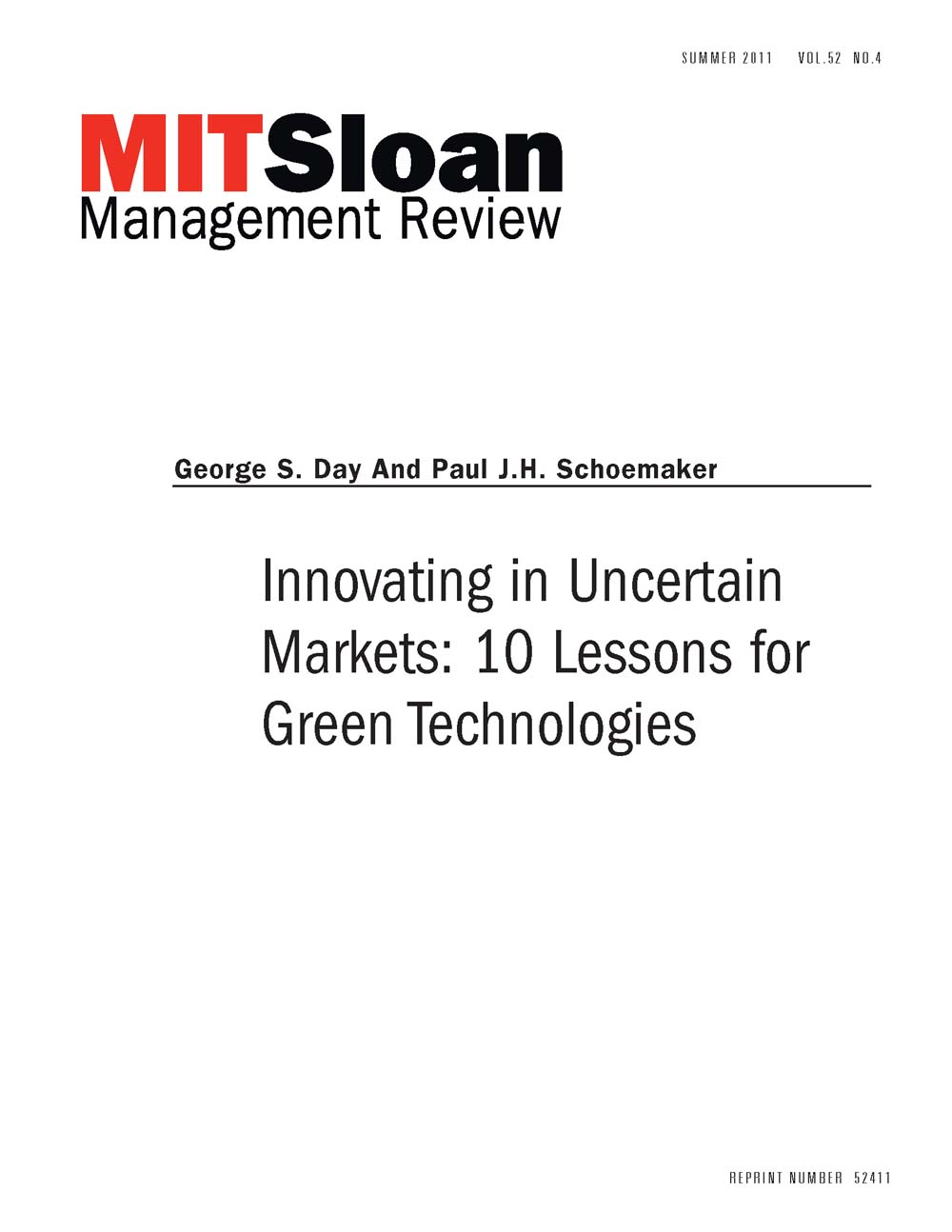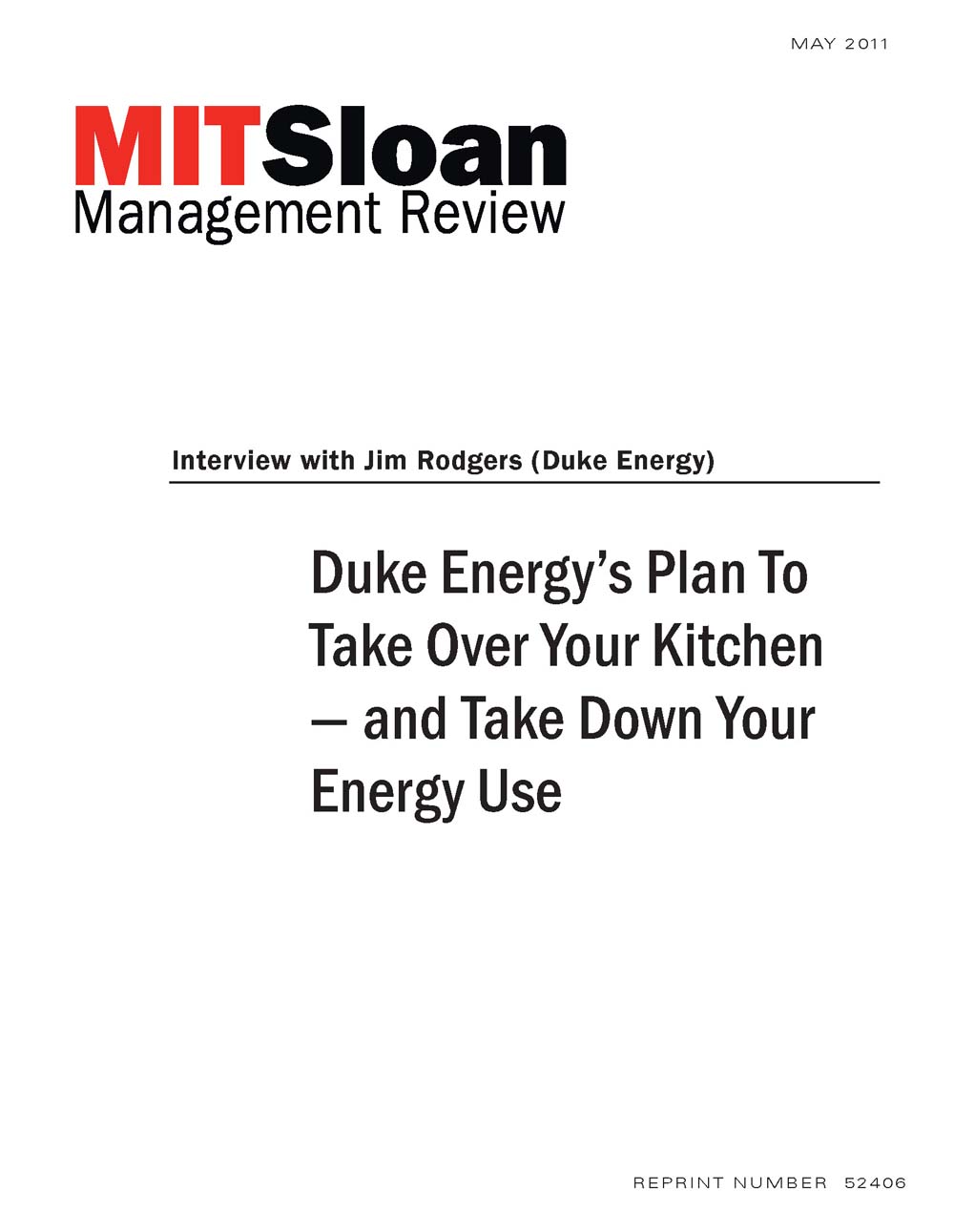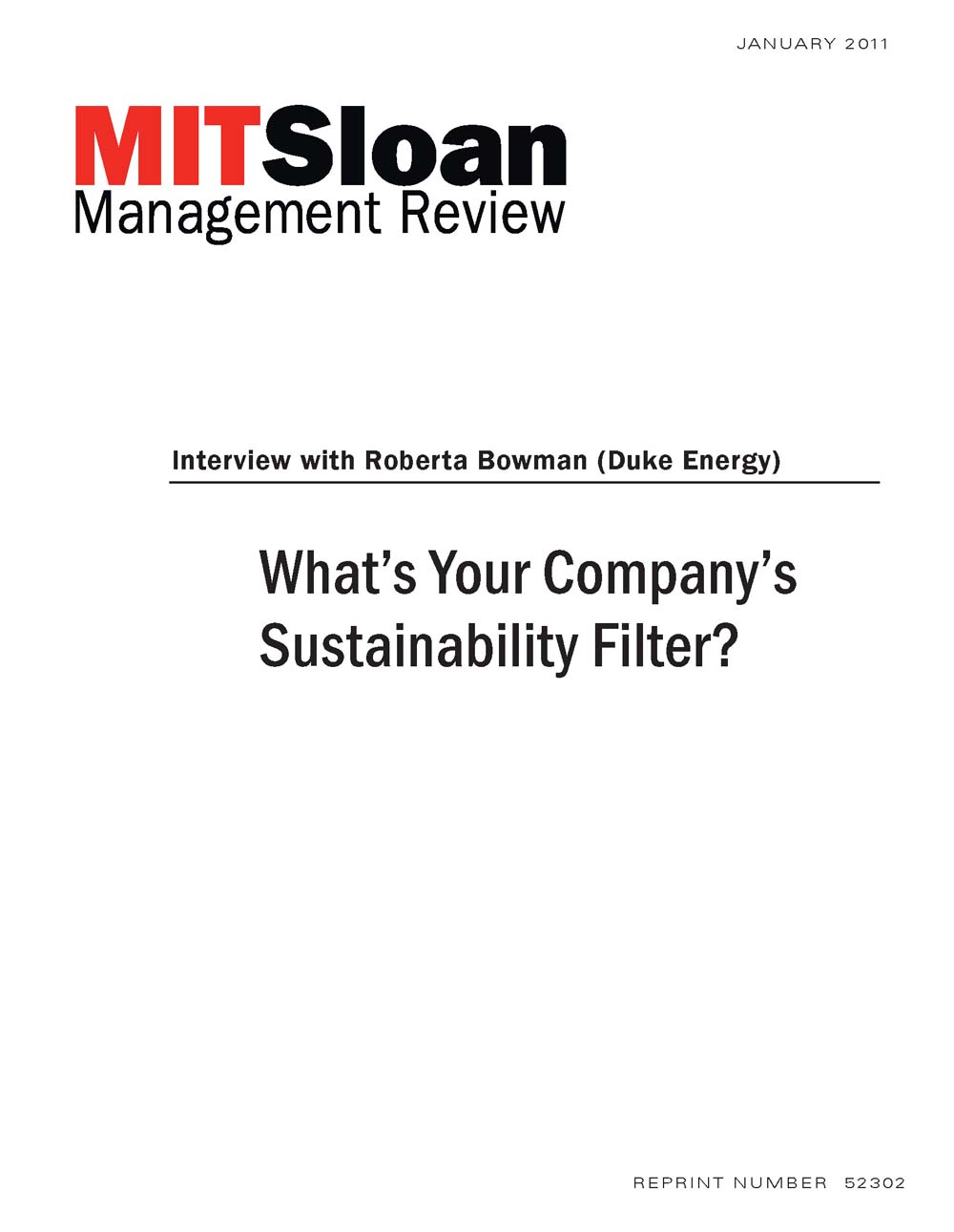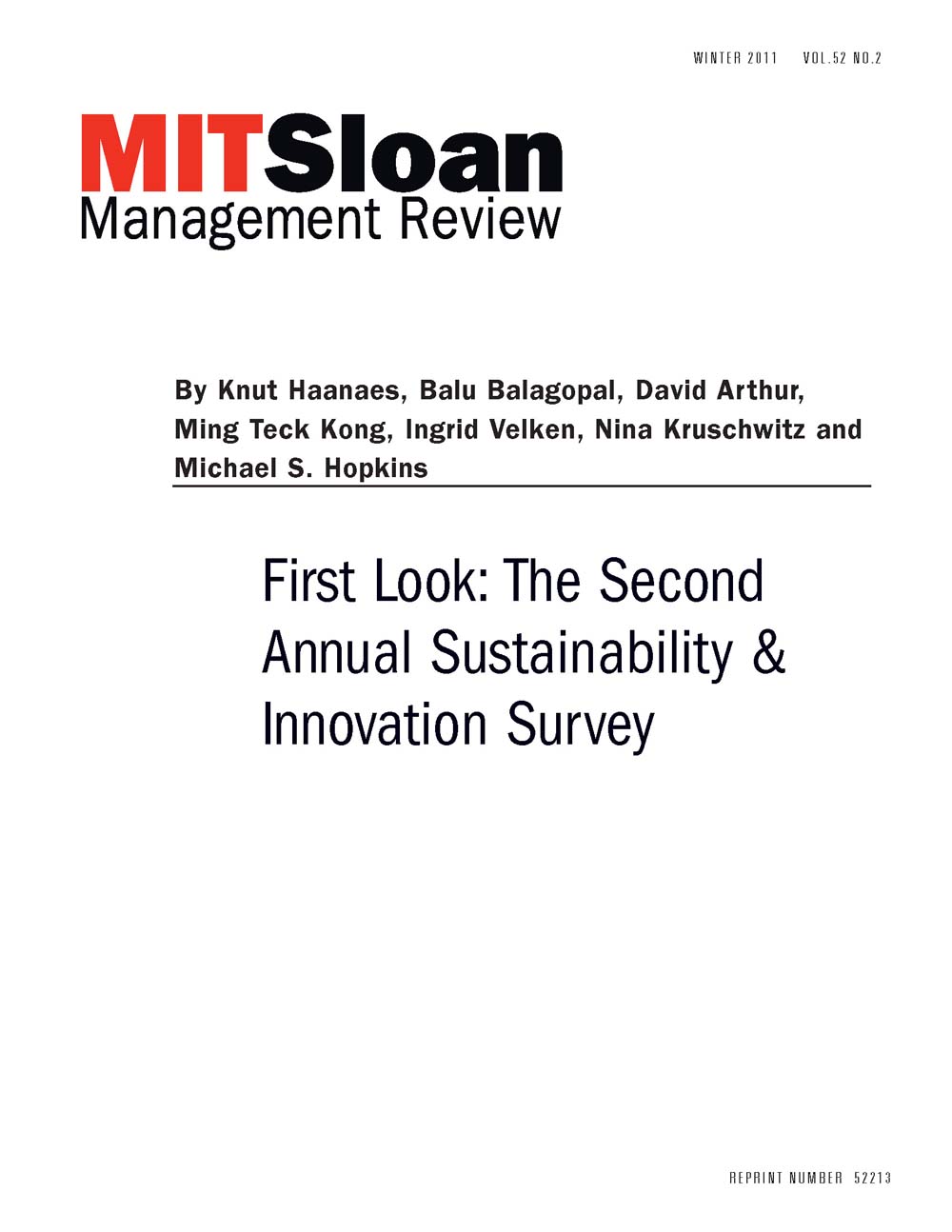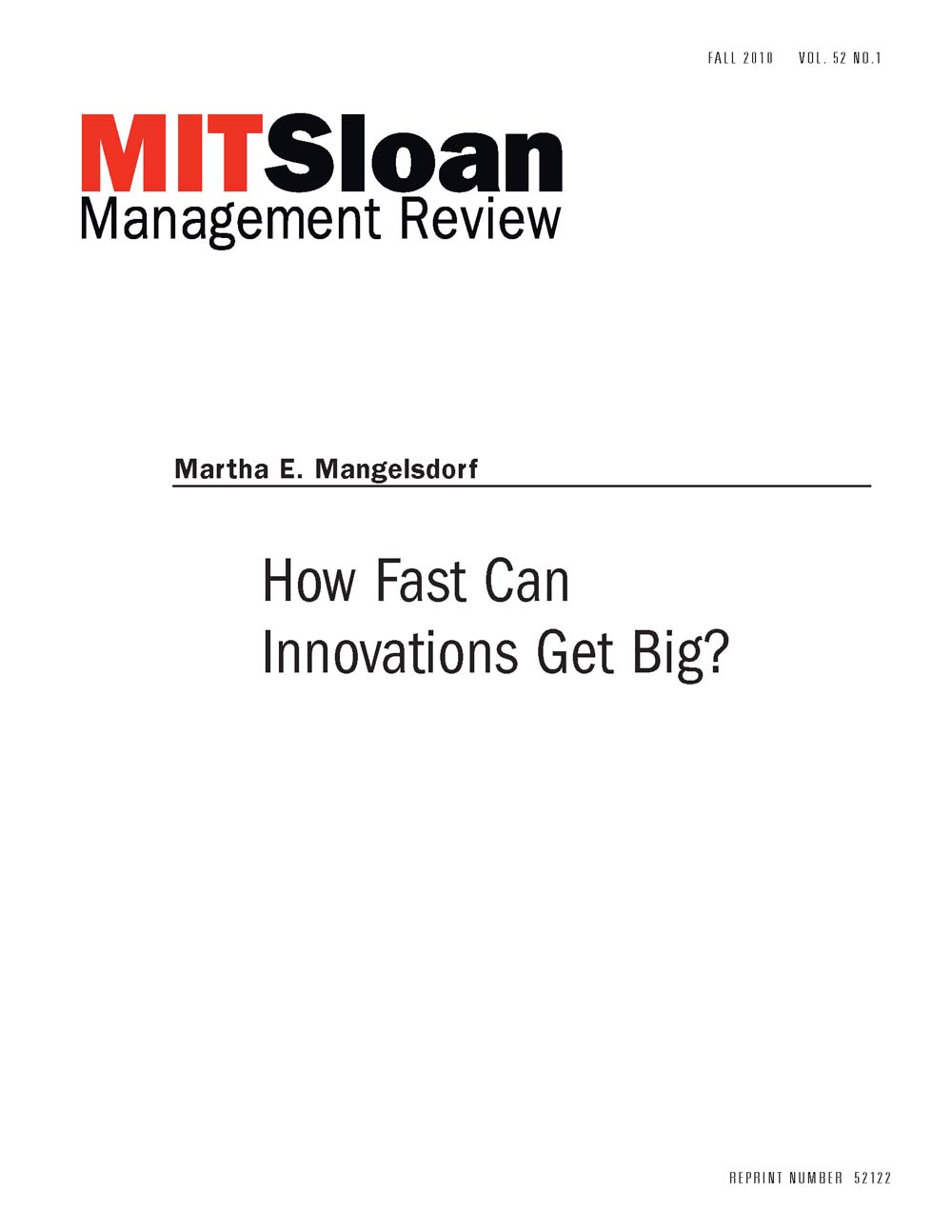Statkraft, Europe's largest renewable power producer, led by Christian Rynning-Tonnesen, made a strategic decision to enlarge its portfolio of renewable technologies long before most other power companies. They first invested in understanding the political economies of target country's energy markets, then built on their established skill base in hydropower to add other technologies to their portfolio of plants. The company developed organizational structures that helped them in creating new profitable projects. Their strategy process depends on accelerated cycles of action and observation. As new strategic plans are implemented, the process of strategic exploration and invention for the next phase is already in motion. Quick feedback on what is working and what isn't ensures the company can innovate for competitive advantage. Encouraging a management style based on mutual trust and respect, rather than fear, ensured they could identify dangers, catch problems early and adapt quickly.
Social Responsibility
Page 10 of 14
-
How Gap Inc. Engaged With its Stakeholders
When the Gap decided to overhaul the way it interacted with critics, it launched a strategy of stakeholder engagement.
-
Innovating in Uncertain Markets: 10 Lessons for Green Technologies
Lessons from the successes and failures of many emerging technologies offer a helpful guide in how adoption works.
-
Duke Energy's Plan To Take Over Your Kitchen — and Take Down Your Energy Use
Jim Rogers' official titles are chairman, president and CEO of Duke Energy. But he says those titles boil down to two roles: general and scout. As general, he sets goals for people. As a scout, he gets to meet people, listen to their ideas, and think about all the potentials for his industry. He thinks of his company as a technology company disguised as a utility. Energy has been at the front of innovation, he notes. Duke Energy is a Charlotte, N.C.-based electric power company that supplies and delivers energy to approximately 4 million U.S. customers. Rogers sees the company's job as being a "nimble pioneer" to help usher in new technologies, new public policies, and new ways of thinking about energy directions. Rogers spoke with Michael S. Hopkins, editor-in-chief of MIT Sloan Management Review, about why education is not sufficient to get people to do the right thing, when it's good to give in to risk, and how Duke Energy plans to shift from being a "supplier of electricity" to an "optimizer of use."
-
From "Trust Me" to "Show Me": Moving Sustainability at Shell Oil From "Priority" to "Core Value"
The timeline of energy development projects now is largely driven by sustainability and social performance issues, says Marvin Odum, president of Shell Oil Company. That's prompting innovations in how the company involves external stakeholders, incentivizes employees and drives changes throughout the entire energy industry. "When I look at an investment proposal now," says Marvin Odum, president of Shell Oil Company, "it still covers the technical issues, of course. It certainly covers the financial issues. But fully half of that proposal deals with what I would call the non-technical risk: social performance and sustainability issues." Like other energy companies, Shell is in a classic "rock and a hard place" situation. The world wants what Shell provides, but it wants it when it wants it, at a price it likes to pay, and with positive or at least neutral environmental and social impact. That's forced the company to adapt its traditional innovation approach and even its overall organizational structure in some surprising ways. The need for those changes has also been heightened by the environmental damage and public relations disaster of the BP oil spill in 2010, Odum says. "What the Gulf of Mexico spill shows us is we are dependent on how the whole industry performs; it affects a part of our license to operate." This is true even though Shell enjoys a reputation for sustainability performance that is stronger than that of most other energy companies. Still, dealing with the broader public perception and wariness that greets energy companieshas become a major focus of the company. Today, managing the concerns of external stakeholders has prompted changes in management approaches and strategy internally, and sustainability issues have moved in Shell from being a company "priority" to a "core value." Odum's responsibilities at Shell Oil include exploration, new business development, and venture management as well as stakeholder management and sustainable development. He spoke with Michael S. Hopkins, editor-in-chief of MIT Sloan Management Review, about what a shift in "core values" really means for company operations and management.
-
What's Your Company's Sustainability Filter?
Sustainability assessment tools are increasingly becoming a predictor and opportunity finder for efficiency in a company's business practices. Duke Energy, a Charlotte, N.C.-based electric power company that supplies and delivers energy to approximately 4 million U.S. customers, uses something it calls the Duke Energy Sustainability Filter to encourage innovation and resource efficiency throughout the company. The tool has already saved the company millions, including over $2 million over six months in startup process for their combustion turbine plants. Roberta Bowman, who has served as senior vice president and chief sustainability officer for Duke Energy since 2008, says that the filter is a lens through which every decision in the company is made. "It's is the tool for conversation and decision-making," she says. The filter employs a series of questions around four key areas: "connection," "efficiency," "balance," and "grandchildren." The filter is one of the tools Duke shares with other organizations looking to evaluate their own risks and practices from a sustainability standpoint. "There is an openness to sharing approaches and techniques that works," says Bowman. "There is sharing and learning at a utility level, and also at a global industry level, from the World Business Council for Sustainable Development to Corporate Economic Forum." In this MIT Sloan Management Review case-study interview, Bowman explains how the filter developed, and why she hopes it puts her out of a job some day.
-
First Look: The Second Annual Sustainability & Innovation Survey
MIT Sloan Management Review's second annual Sustainability & Innovation survey--exploring the current and projected sustainability-related practices of organizations and executives--was fielded during a year of bad public news for sustainability advocates. Between last year's much-publicized delay in reaching an international agreement on climate change in Copenhagen and the continuing economic malaise, it was hard to predict how sustainability would fare as a management priority. Would companies begin to scale back their efforts to adopt more efficient business practices and become less focused on sustainability-related issues? Would they put existing programs on hold? What assessments would they make about the implications for managers of the changing sustainability landscape, and how were their strategic plans for competing in the future being affected by sustainability concerns? This article is a first look at the results of the 2010 Sustainability & Innovation Executive Study--focusing especially on 12 top-line observations drawn from the survey data and separate in-depth executive interviews. The survey respondents included more than 3,107 managers and executives, representing every major industry and region of the world. This article offers answers to such questions as, Where does sustainability now fit on top management's agenda? Do top-performing companies see things differently? Who drives the agenda within companies? What does the C-suite think? And how do top managers go about making sustainability-related investment decisions when tangible information for weighing costs and benefits is often lacking?
-
How Fast Can Innovations Get Big?
Energy sector innovation faces an important hurdle, according to MIT's Ernest Moniz. How do we reconcile the cultural mismatch between innovators and the establishment?
-
How SAP Made the Business Case for Sustainability
For more than a decade, Peter Graf, a computer scientist by training (Ph.D. in artificial intelligence), has focused on marketing at SAP, the business management software company. Since March 2009, Graf has had a new role: as SAP's first-ever chief sustainability officer for the company leading a global team that oversees all sustainability-related initiatives, from the creation of solutions that enable sustainable business processes for SAP customers to SAP's own sustainability operations, including key social, economic and environmental programs. Graf's first task as an inaugural CSO was one of perception. "I had to be very careful not to come across as a marketing show," he says. "That means when we talk externally, the initial conversation is all about SAP as a role model." Once SAP established their credibility based on their own initiatives and metrics, using their own systems, they were able to communicate to customers that they too could reach their sustainability goals using SAP's systems. Graf's second, and bigger task, was to grapple with internal corporate strategy. He had to make the business case for sustainability-driven actions -- and the case for trying to build SAP into a sustainability role model -- to SAP's own board of directors. His case was built on compliance, resource productivity, market opportunity, energizing the work force, and sustaining a business model. In this interview, Graf discusses how he made the sustainability case internally, what the payoffs have been and how SAP customers have -- and haven't -- responded.
-
How Sustainability Fuels Design Innovation
There’s an alarmist view of sustainable design that tilts toward the all-or-nothing. But it’s not the best path, says new-product design expert Steven Eppinger. When it comes to the practice of what Eppinger calls “design for environment,” he rejects the radical and argues for the incremental. For one thing, allor- nothing isn’t an approach businesses are especially good at; it takes too long, and fails too often. For another, the sum of continuous incrementalism is likely, he says, to carry designs further toward the no-impact outcomes everyone desires. Plus, there’s a method to it. It can be learned. The secret is to focus on materials. In this MIT SMR Sustainability Interview, Eppinger addresses the question of how environmental concerns can drive product design and innovation. Among his main points: 1) Design and product innovation for environmental sustainability should be framed as a materials problem; 2) How much material is used is less important than what material is used; 3) Don’t try to eliminate environmental impacts all at once. Try to get a little better each time you design any product.





